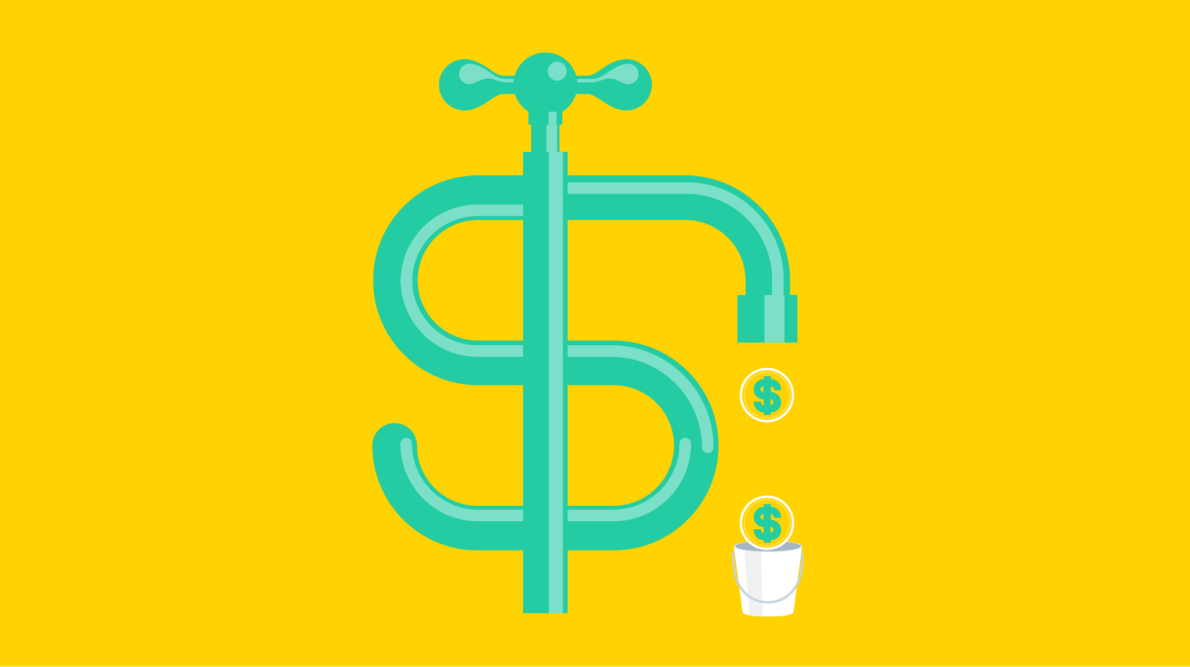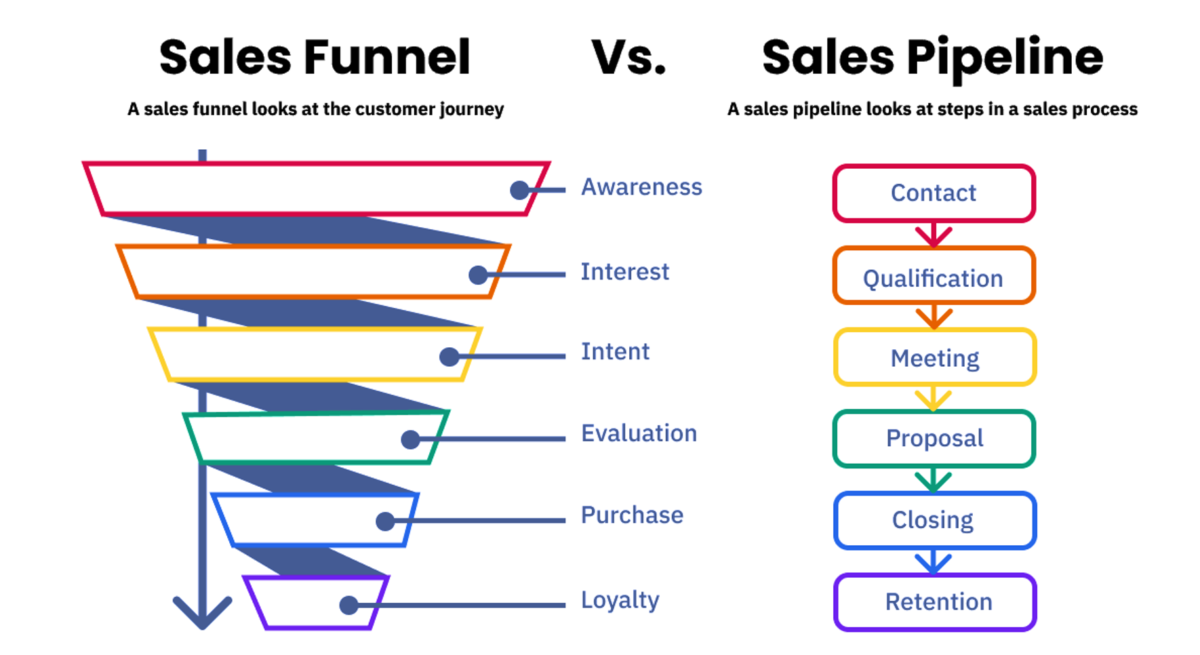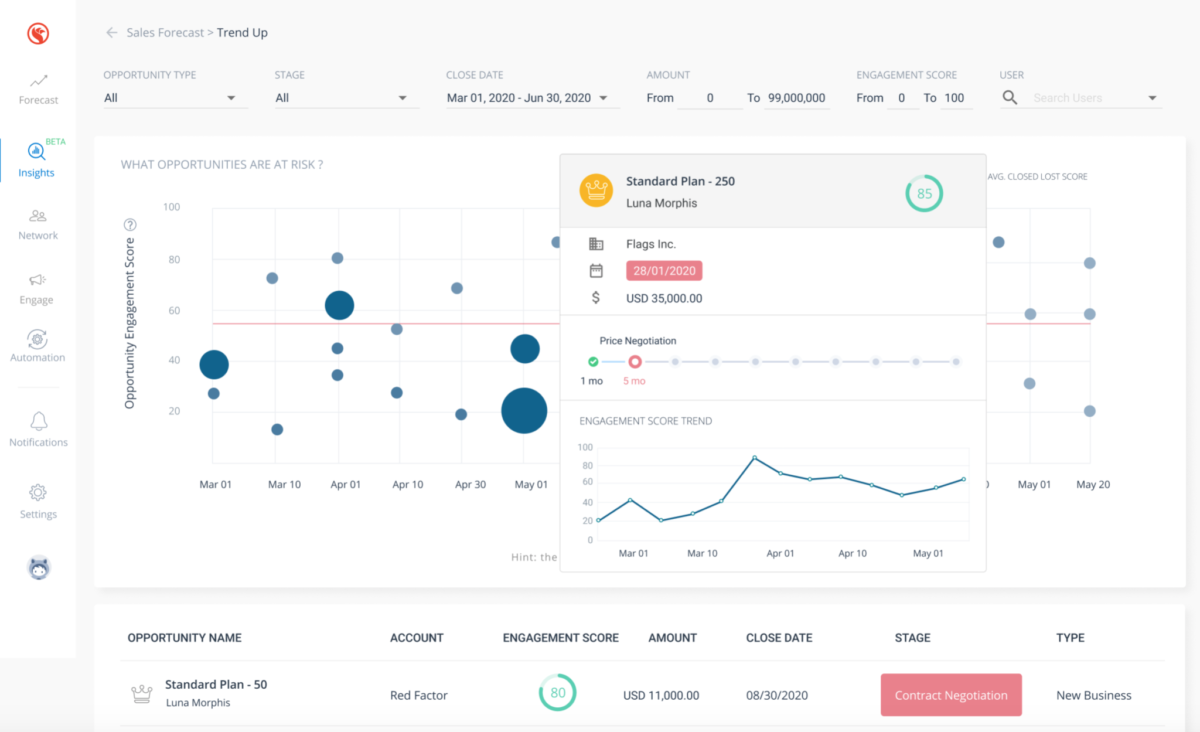Table of Contents
Share this article
Learn from the brightest minds how to predictably and efficiently grow revenue.
Related Content
5 Ways to Use the Ebsta Integration With HubSpot to Improve Sales Performance
How to improve adoption of HubSpot with Ebsta
B2B Sales Benchmarks: 2023 H1 Update
The latest update from the 2023 B2B Sales Benchmarks analysis of over $37bn in pipeline.
How to improve AE quota attainment (according to data)
23% of reps are contributing 83% of revenue. Here's how to solve it (with data)

3 Ways to Improve Sales Pipeline Accuracy
Managing the sales pipeline is a critical aspect of managing team performance.
If you were promoted from the field, you probably already know that the sales pipeline holds information about pending sales opportunities and consists of various stages relating to the advancement of those opportunities.
But before we proceed, let’s look into what is sales pipeline and why is it so instrumental in selling success.
Table of Contents
What is a Sales Pipeline?
A sales pipeline is a set of stages that a prospect moves through, as they progress from a new lead to a customer. Once each pipeline stage is completed, the prospect is advanced to the next stage.
If you don’t use a sales pipeline, you won’t have the insight you need to see if your sales process is effective — you’ll just have guesswork. The increased accountability a customer pipeline gives you makes it easy to see where opportunities exist for improvement.
What’s the difference between a sales pipeline and a sales funnel?
A sales pipeline describes the steps that your sales team takes while qualifying leads and closing deals. A sales funnel describes the customer journey as people go from learning about your company to becoming a customer.
A sales funnel visually represents people as they advance through pipeline stages. It’s shown as an inverted pyramid where potential customers enter at the top.
Qualified leads “funnel” down through the sales process, so the funnel narrows as the number of qualified leads drop. At the bottom of the sales funnel are the successfully converted customers.

Though the structure of a sales pipeline can differ from company to company, here are some of the more common stages:
1. Contact. Before you can make a sale, you need a real-life person that’s interested in what you sell.
2. Qualification. The rep asks questions to determine if the prospect has the need, budget, and authority to buy in the near future.
3. Meeting. The sales rep and prospect discuss the solution that would best fit the prospect’s needs.
4. Proposal. The rep sends the prospect a detailed quote laying out what will be provided, at what cost, and for how long.
5. Closing. Final negotiations are made and contracts are signed. The prospect is officially a customer.
6. Retention. Having a strategy to keep your customers happy is an integral stage of nearly every sales pipeline.
A sales pipeline plays a key role both in closing more sales deals and indicating the overall health and future direction of your company.
The Importance of the Sales Pipeline
A salesperson’s relationship to the pipeline is materially different from that of a manager.
For the manager, the pipeline has two primary functions. First, it’s a coaching tool. The information in the pipeline will provide structure and focus for the weekly discussions you’ll have with salespeople. The aim of these discussions is to develop strategies that help salespeople advance their sales opportunities and close more deals.
Second, the pipeline is now a reporting tool. You’ll use pipeline metrics to create sales forecasts, which get handed off to upper-level managers and executives so they can see how much revenue the sales team is expected to bring in for the month or quarter. You should always be mindful that the executive team wants to see 1) an accurate forecast and 2) higher win rates.
Salespeople have a much different relationship with the sales pipeline. For one thing, they are eternal optimists – no matter how long a deal has been lingering in their sales pipeline, they believe a “yes” is just around the corner. Your average salesperson also believes his or her manager will respond more positively to a full pipeline (even if it is full of dormant opportunities).
Compounding this problem is the tendency of salespeople to avoid labeling stalled opportunities as “inactive” because they perceive it will be a poor reflection on their selling skills.
Over time, the pipeline becomes bloated with opportunities in different stages for widely disparate time periods. Since this information is readily available and tracked by senior sales leaders, they want to know which opportunities are realistic, how soon those deals might close, and why such a high percentage of opportunities seem to be “stuck.”
3 Step Approach to Managing Pipeline Quality
Here’s the 3-step method that increases pipeline quality and funnel health.
1. Measure overall pipeline quality health.
This is often the starting point for newly appointed VPs of Sales. They need to quickly and accurately gauge the health of the pipeline. However, existing sales leaders must also regularly assess overall funnel quality.
2. Assess the viability of individual deals.
For example, identifying deals that are in the sales forecast, but which have a reduced chance of a successful outcome.
3. Improve quality through appropriate Salesforce configuration.
This can systematically improve the quality of the funnel. In particular, adapt your CRM system to improve deal qualification and validation.
Naturally, other factors can also drive funnel quality. Salesperson training, for example. However, unless you get these foundations in place, the impact of any other positive steps will be significantly reduced.
Benefits of High Sales Pipeline Quality
Why not simply focus on increasing pipeline size?
It’s because if you accurately measure and improve sales funnel quality, three things will happen:
1. Sales forecasts will be more accurate. This is because forecasts will not be muddied by poor quality deals that have little chance of closing successfully.
2. Salespeople and sales managers will waste much less time on irrelevant deals. Consequently they have more time to spend on viable opportunities, thereby increasing overall revenue.
3. You will have a realistic understanding of whether there is enough pipeline to meet your sales target. This is because when you compare a high-quality sales pipeline with your quota, you immediately know the chance of hitting your number.
Increasing Sales Pipeline with Data Insights
In summary, the opportunity pipeline is a great way for you to manage your day and create accurate revenue predictions. There are important steps that can help you support this but in the end it all boils down to fully committing and trusting your CRM system and one way to ensure this is to set it up so it reflects your business needs and your business needs only.
Your sales pipeline is critical to driving growth, but like your performance data, it’s not useful if you can’t gain insights from it. In order to truly increase your sales pipeline, you need to be able to have full visibility on where deals stand, new leads, and projected close/win rates.
When you have a deeper level of visibility, you can focus more on strategy rather than tactical execution of your sales plans. And that’s when you really start to see the performance take off.
Ebsta’s Pipeline Insights offers complete visibility into your pipeline so that you’re able to:
- Monitor engagement across every opportunity in your pipeline.
- Track whether opportunities are trending positively or negatively.
- Spot opportunities and renewals suffering from a lack of engagement.
- Dive into team activity within every opportunity.

We’re running a free Pipeline Health Check that will give you immediate visibility into what’s really going on with your pipeline.
So what are you waiting for? Get started right away!